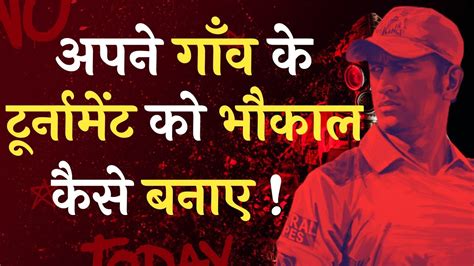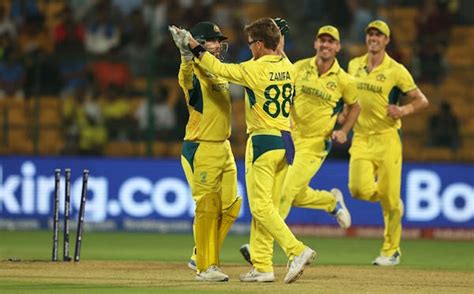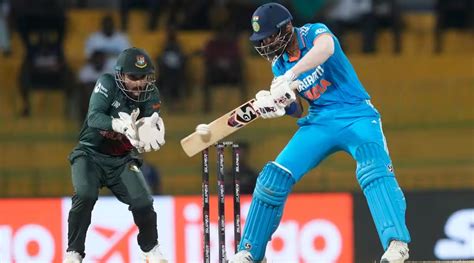Learn how to effectively organize a cricket tournament from forming committees to securing sponsorships and maximizing participation with our comprehensive guide.Organizing a local cricket tournament can be an exciting and rewarding experience, bringing together community members and fostering a love for the game. Whether you’re a passionate player or a dedicated fan, the thrill of coordinating an event that showcases skill, teamwork, and sportsmanship is unmatched. In this guide, we will walk you through the essential steps to successfully host a local cricket tournament. From understanding the basics of tournament organization to forming an effective local cricket committee, and from setting up schedules and venues to securing sponsorships, we’ve got you covered. With thoughtful planning and promotion, your tournament can attract participants and spectators alike, creating a memorable experience for everyone involved. Let’s dive into the details and get your cricket tournament off to a winning start!
Understanding The Basics Of Organizing A Tournament
Organizing a local cricket tournament requires careful planning and execution. To ensure your event is successful, there are several fundamental aspects to consider.
Firstly, it is crucial to determine the tournament format. Whether you’re planning a knockout, league, or round-robin format, each format has its own advantages and disadvantages. Here’s a brief overview:
| Format | Description | Pros | Cons |
|---|---|---|---|
| Knockout | Teams are eliminated after a loss. | Quick and straightforward. | High chance of early elimination for teams. |
| League | Each team plays against all others. | Fair assessment of team skills. | Longer duration of the tournament. |
| Round-Robin | Similar to league but usually includes a final. | Increased competition and excitement. | More matches lead to longer tournaments. |
Next, you must establish any rules and regulations governing the tournament, including eligibility, match duration, and player conduct. Clear guidelines will help avoid conflicts and misunderstandings during the event.
Budgeting is also an integral part of organizing your tournament. Calculate expenses such as venue rental, equipment, and prizes. Ensure that you have a financial plan that includes potential income from sponsorships and registration fees.
Consider the logistics of the tournament. This includes arranging for umpires, scorers, and volunteers who can assist on the day. Effective communication and a well-structured plan will facilitate a smoother event.
By thoroughly understanding these basics, you can streamline the process of organizing your local cricket tournament and make it a memorable experience for all participants.
How To Form A Local Cricket Committee Effectively
Forming an effective local cricket committee is essential for the smooth organization of your cricket tournament. Here are some steps to help you establish a strong committee:
- Identify Key Roles: Determine the essential positions needed in your committee, such as a chairperson, secretary, treasurer, and heads for various operations like marketing and logistics.
- Recruit Members: Choose individuals who are passionate about cricket and have relevant experience. It’s vital to have a mix of skills, including management, finance, and public relations.
- Set Clear Objectives: Organize a meeting to outline the committee’s goals. Everyone should understand the tournament’s vision, timelines, and their individual responsibilities within the team.
- Establish Communication Channels: Set up communication tools (like WhatsApp groups or emails) to ensure that all committee members are updated regularly. Clear communication fosters teamwork and efficiency.
- Hold Regular Meetings: Schedule periodic meetings to discuss progress, address challenges, and make necessary adjustments in planning. These meetings help in maintaining momentum and accountability.
- Encourage Collaboration: Foster an environment of cooperation among committee members. Encourage sharing of ideas, and make sure everyone feels valued and heard.
- Document Everything: Maintain detailed records of meetings, decisions made, and tasks assigned. This transparency will aid in managing the committee effectively and can be referred back if needed.
- Seek Out Expertise: If possible, include people with specific expertise—like someone knowledgeable in sponsorship or event management—to strengthen the committee’s capabilities.
By focusing on these strategies, you can effectively form a local cricket committee that will drive the success of your tournament. Remember, a well-organized committee is the backbone of any successful event, ensuring that everything runs smoothly and efficiently.
Setting Up Schedule And Venue For The Matches
Setting up a schedule and securing a suitable venue for your cricket tournament is crucial for its success. Here are some key steps to effectively manage this aspect:
- Choose the Right Venue: Look for cricket grounds that are well-maintained and have good facilities, such as player changing rooms, restrooms, and seating for spectators. Consider the accessibility of the venue for participants and spectators alike.
- Check Availability: Once you have shortlisted potential venues, check their availability for your desired dates. It’s best to have several options in case your first choice is booked.
- Plan the Tournament Schedule: Create a detailed schedule that outlines match timings, including warm-up periods, breaks, and time for any unforeseen delays. Ensure that there is enough time between matches for teams to rest and prepare.
- Consider Weather Conditions: Be mindful of the local climate and plan your matches during times of the day when weather conditions are most favorable. In some regions, rain delays may be common, so have contingency plans in place.
- Communicate with Teams: Once the schedule is set, keep open lines of communication with all participating teams. Share the finalized schedule and inform them of any changes promptly.
- Review Rules and Regulations: Each match should adhere to the rules set out in your tournament guidelines. Ensure that the umpires and teams are familiar with the schedules and any regulations related to match timing.
By focusing on the logistics of scheduling and venue selection, you can help ensure that your tournament runs smoothly and is enjoyable for all participants and spectators. This attention to detail demonstrates your commitment to hosting a successful event, which can encourage more players and teams to participate in future tournaments.
Gathering Resources And Securing Sponsorships
To successfully organize a local cricket tournament, it is essential to gather the necessary resources and secure sponsorships to support the event. Here are some key strategies on how to effectively gather resources and obtain sponsorships:
1. Identify Your Resource Needs
- Match equipment (cricket bats, balls, wickets, etc.)
- Venue arrangements (rentals, permissions, etc.)
- Marketing materials (flyers, banners, online ads)
- Prizes and awards for winners
2. Approach Local Businesses
Local businesses often look for ways to engage with the community. Prepare a sponsorship proposal that outlines:
- Benefits for the sponsor (exposure, brand promotion)
- Different sponsorship tiers (silver, gold, platinum)
- How their contribution will be utilized
3. Utilize Social Media
Leverage social media platforms to reach a wider audience. Create engaging content that highlights your tournament’s schedule, objectives, and sponsorship opportunities:
- Videos explaining the event
- Graphics showcasing sponsorship benefits
- Regular updates leading to the tournament
4. Establish Partnerships with Cricket Associations
Partnering with local cricket associations can help you access greater resources and connect with potential sponsors. They often have established relationships with businesses that may be interested in sponsorship opportunities. Discuss mutually beneficial arrangements and how they can enhance your tournament.
5. Offer Value to Sponsors
When attracting sponsors, it’s crucial to articulate the value they will receive. This can include:
- Brand visibility during matches (banners, logos on uniforms)
- Mentions in press releases and promotional content
- Opportunities to engage with attendees
6. Create a Sponsorship Package
Design a professional sponsorship package that includes:
- Event details and overall vision
- Demographic and reach statistics of your audience
- Clear outlines of sponsorship levels and benefits
This can be shared via email or during meetings with potential sponsors.
7. Follow Up and Build Relationships
After initial outreach, follow up with potential sponsors to show continued interest. Building long-term relationships can lead to recurring sponsorships in future tournaments. Keep them updated on your planning stages and how their support is making a difference.
By strategically gathering resources and securing sponsorships, you can elevate the quality of your local cricket tournament and ensure a successful event. Remember, the key is to clearly communicate the benefits for the sponsors while demonstrating your commitment to making the tournament a standout experience for all participants.
Promoting Your Tournament For Maximum Participation
Effectively promoting your local cricket tournament is key to ensuring a high turnout and engaging the community. Here are some strategic ways to promote your tournament:
- Social Media Campaigns: Utilize platforms like Facebook, Instagram, and Twitter to create event pages and share updates. Use eye-catching graphics and videos to attract participants and spectators. Consider using hashtags related to your tournament to increase visibility.
- Email Newsletters: Reach out to local cricket clubs, schools, and sports organizations by sending out newsletters. Provide essential details about the tournament, including dates, registration processes, and prizes.
- Community Engagement: Partner with local organizations and schools to promote the event. Engaging community leaders can help spread the word and encourage participation.
- Flyers and Posters: Design and distribute flyers and posters around the local community. Focus on high-traffic areas such as community centers, gyms, and cafes.
- Local Media Coverage: Reach out to local newspapers, radio stations, and news channels for coverage. An article or segment about your tournament can significantly increase interest.
- Online Registration: Make the registration process simple and accessible through an online platform. The easier it is to sign up, the more participants you will attract.
- Incentives: Consider offering incentives for early registration, such as discounts or special gifts, to encourage teams to sign up quickly.
By focusing on these promotional strategies, you can effectively reach a wider audience and increase participation in your tournament. Remember that the more visibility your tournament gets, the more likely it is to attract both players and spectators, creating a successful and memorable event.
Frequently Asked Questions
What are the initial steps to organizing a local cricket tournament?
The initial steps involve defining the tournament’s purpose, choosing a suitable date and location, and determining the format of the tournament.
How do I choose teams for the tournament?
Teams can be chosen by inviting local clubs, schools, or community groups, or by allowing individuals to register and then forming teams through a draft system.
What permissions or permits do I need to organize a cricket tournament?
You may need to obtain permits from local authorities, secure insurance coverage, and ensure the venue is suitable and available for the tournament dates.
How can I promote my local cricket tournament?
Promote the tournament through social media, flyers, local newspapers, and community boards. Consider creating an event page for participants and spectators to follow.
What equipment is necessary for hosting a cricket tournament?
Essential equipment includes cricket bats, balls, stumps, protective gear, and scorekeeping materials. You may also need boundary markers for the playing field.
How should matches be scheduled during the tournament?
Create a match schedule based on the number of teams, using a round-robin or knockout format, and ensure adequate time for each match along with breaks.
What are some tips for ensuring a smooth execution of the tournament?
Assign roles to volunteers, ensure clear communication with teams, provide a first-aid kit on-site, and prepare for weather contingencies to ensure the tournament runs smoothly.









